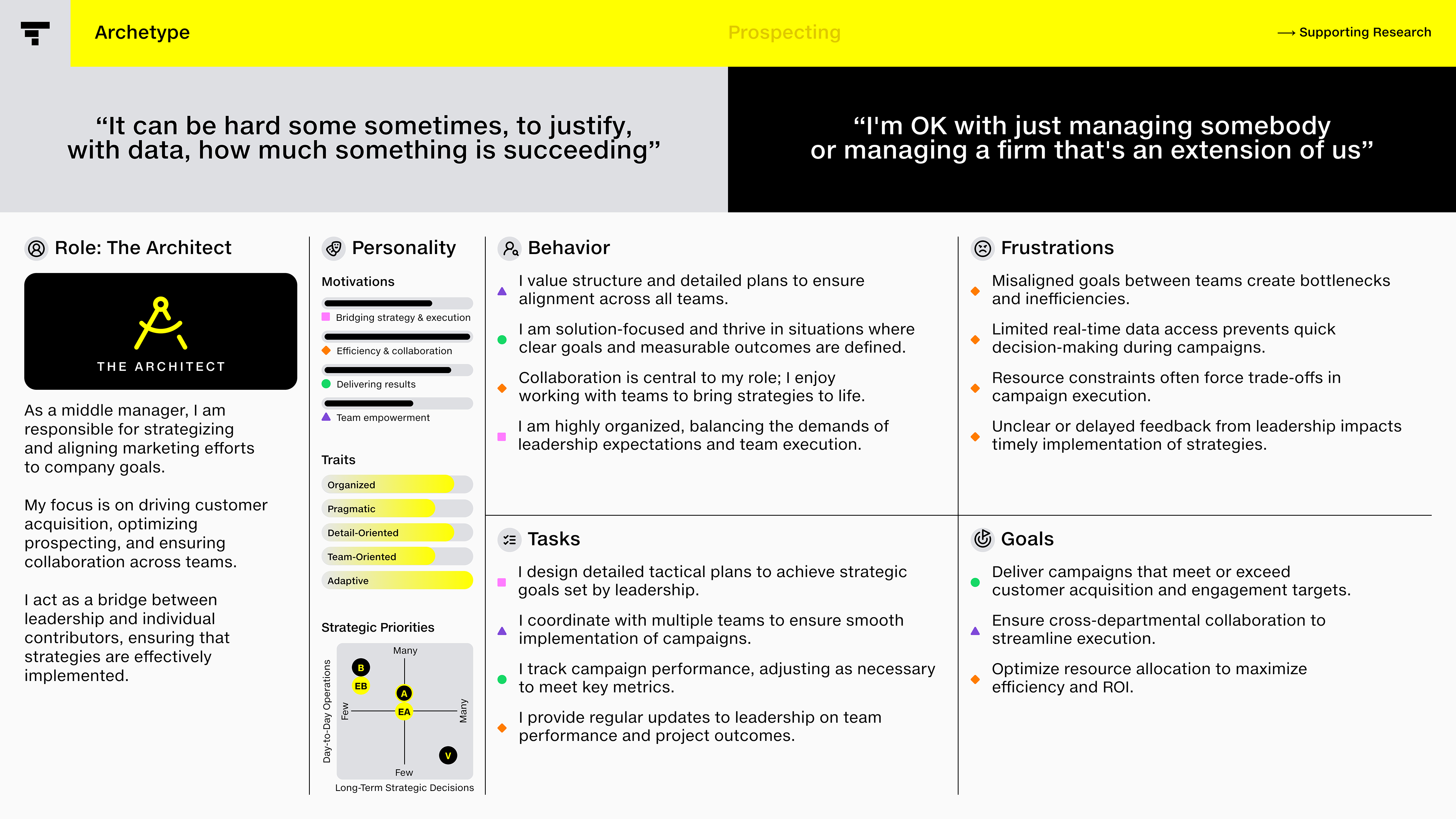Overview
Creating effective user personas is fundamental to designing products that truly meet user needs.
This project focused on understanding the unique challenges, motivations, and goals of our users to inform the development of a prospecting and reporting feature.
By leveraging rigorous research methods, I uncovered actionable insights that drove alignment across teams and guided strategic design decisions.
This project focused on understanding the unique challenges, motivations, and goals of our users to inform the development of a prospecting and reporting feature.
By leveraging rigorous research methods, I uncovered actionable insights that drove alignment across teams and guided strategic design decisions.
Role: UX Researcher and Principal Product Designer
Deliverables: Personas, Journey Maps, Insights Report, and Feature Recommendations
Deliverables: Personas, Journey Maps, Insights Report, and Feature Recommendations
Problem Statement
To create a product feature for prospecting and reporting, we needed to deeply understand our users. However, the team lacked clarity on who the users were, their day-to-day challenges, and their priorities. This gap led to misaligned strategies and inefficiencies in addressing user needs.
Objectives
• Develop detailed personas to represent key user groups.
• Build empathy within the team for users' challenges and motivations.
• Uncover actionable insights to guide feature design and prioritization.
Process
1. Research and Discovery
We began by gathering qualitative data through user interviews and transcript analysis, focusing on:
• Conducting 31 interviews and over 34 hours of video with users across diverse roles (e.g., executives, managers, contributors).
• Analyzing behavioral patterns and identifying recurring themes.
• Engaging stakeholders in workshops to validate findings and incorporate their perspectives.
2. Persona Development
Using the data collected, I synthesized findings into five distinct personas:
• The Visionary: A high-level strategist focused on ROI and long-term growth.
• The Architect: A middle manager ensuring alignment and execution.
• The Builder: A hands-on contributor executing campaigns.
• The External Architect: A consultant providing strategic guidance.
• The External Builder: A consultant managing campaign execution for clients.




3. Key Insights
• Data Silos: Users struggled with fragmented tools, creating inefficiencies.
• Bandwidth Constraints: Limited time and resources affected decision-making.
• Collaboration Gaps: Misaligned goals often slowed progress.
These insights shaped the narrative for the personas and provided a foundation for feature recommendations.

The Visionary

The Architect

The Builder

The External Architect

The External Builder
4. Delivering Impactful Readouts
I presented findings through a research readout designed to build empathy and drive alignment.
The presentation included:
The presentation included:
• Stories to humanize data.
• Actionable recommendations tied to user needs.
• Actionable recommendations tied to user needs.
• High-quality visuals for clarity.
Outcomes
Informed Design Decisions: Personas directly influenced the design of features like unified dashboards and automated workflows.
• Team Alignment: Stakeholders aligned on key challenges and opportunities, streamlining product development.
• Actionable Roadmap: Clear priorities emerged, focusing on the highest-impact features for users.








